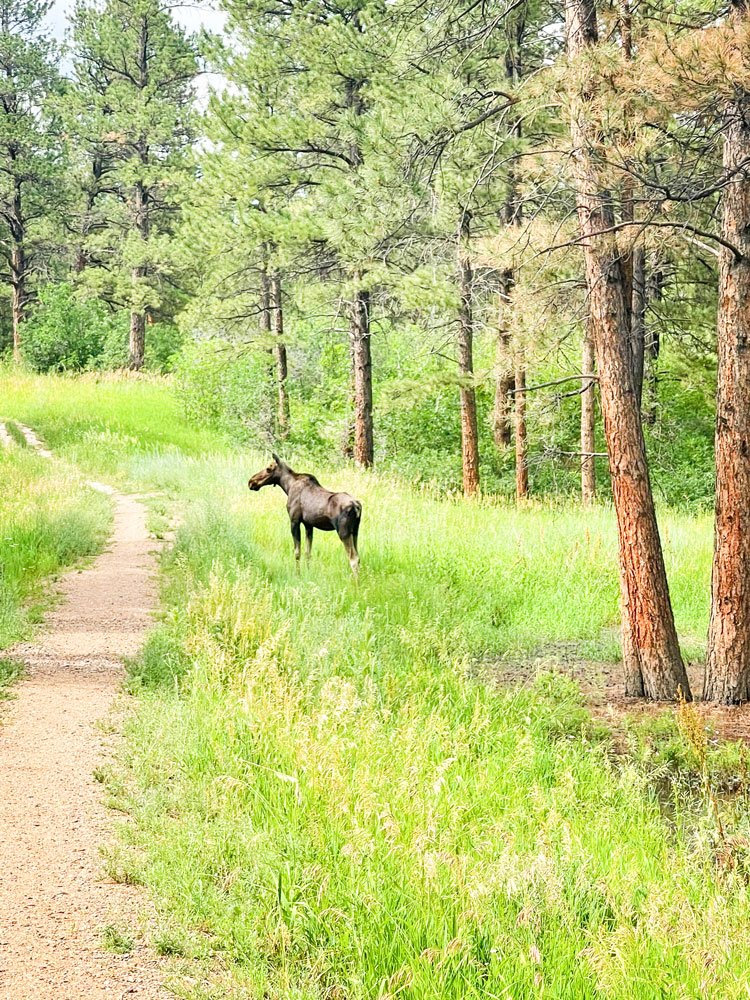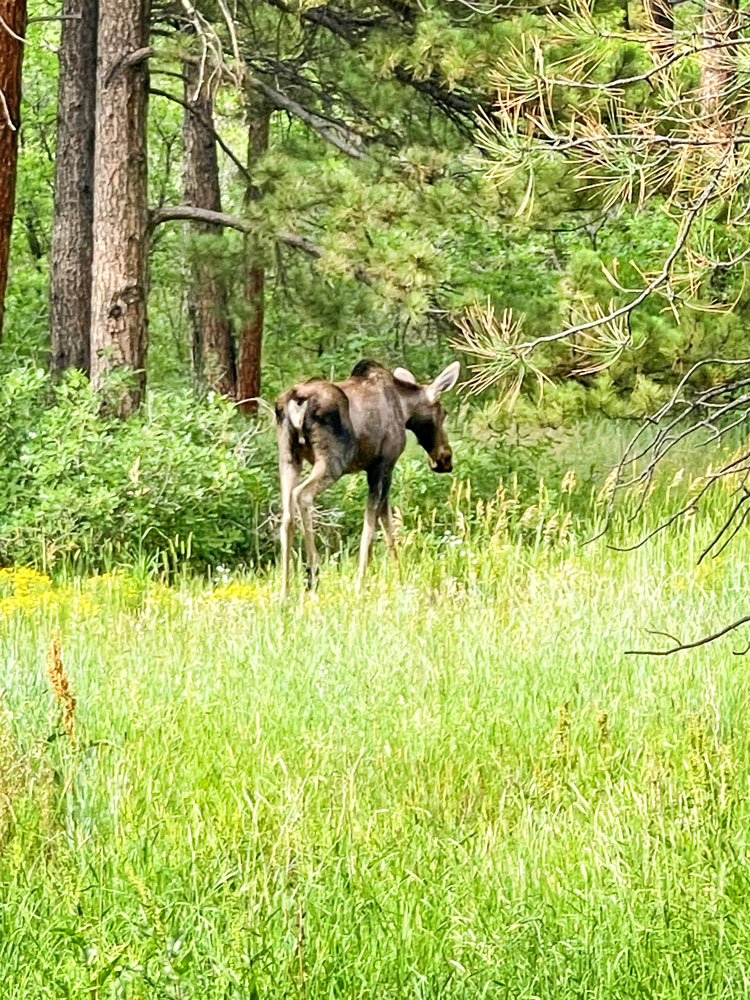Moose sightings across the Front Range
By Carin R. Kirkegaard; photos courtesy of Melissa Pruitt

Melissa Pruitt, a resident in The Village at Castle Pines, spotted one of the juvenile moose that have been hanging around the wooded areas in the community. “We have been fortunate to have had many moose encounters up in the mountains as a family. So, when we were leaving the neighborhood and my son said ‘There’s a moose’ I was shocked!” said Pruitt. Colorado Parks and Wildlife surmise that the moose she photographed came down through Waterton Canyon and made its way east.
Wildlife sightings are one of the perks to living in the Castle Pines community. From the various prairie dogs that chitter as walkers and bikers pass their colonies, to the herd of elk and mule deer that graze in open spaces, to the elusive mountain lion and bobcats, even the bears that come to forage for an easy dinner – all are exciting to spot. This summer, residents throughout Douglas County have been fortunate to catch a glimpse of three juvenile moose who have been wandering throughout the area.
Jason Clay, Colorado Parks and Wildlife (CPW) public information officer, said that there have been two sibling moose that have been spotted in Castle Rock neighborhoods and north up the Highway 85 corridor. He also said there is another single moose who has been seen in Highlands Ranch and further east into Parker.
In general, moose prefer to stay in a higher elevation foraging and browsing in a riparian landscape rich with leaves, twigs, buds and the bark of willow, aspen and maple trees, adding in a dietary complement of aquatic plants like lilies and rushes. Typically, moose don’t find their way down to the Front Range urban areas, but Clay said, CPW averages one to two moose a year that show up in the Denver metro area. He said they are usually yearlings.
Mother cows give birth in May and June and they aren’t very tolerant of the previous spring’s offspring, Clay continued. Being pushed out of the nest, the juvenile moose are left to find their own way, being inexperienced they quite often follow the rivers and streams down from the western ridges and end up in neighborhoods.
“We try to let them make their own way back. Sometimes they do get trapped in a populated area, and CPW has to go hands-on to relocate them,” said Clay, emphasizing that tranquilizing and transporting the moose in the heat of summer is very hard on the animal.
The Shiras moose is Colorado’s largest animal. Adults can weigh between 800 to 1,200 pounds and can stand up to 6 feet at the shoulder. Along with a temperament that isn’t easily shooed and prone to charging they are also the state’s most dangerous animal, Clay cautioned.
Clay stressed the importance of keeping a safe distance if a resident happens to come upon a moose out hiking in open spaces or on the many trails located throughout the community and to keep your dogs on a leash. “They like to charge – especially dogs – who then run back to their owners,” Clay said. “If the moose happens to be on your path, it’s best if you back away and find another way, and if it’s in your backyard – call the CPW,” he continued.
The CPW northeast region can be reached at 303-291-7227. In the meantime, simply enjoy the idea that on any given day in Colorado, you may see a moose passerby.
